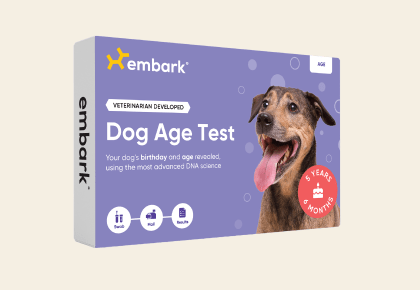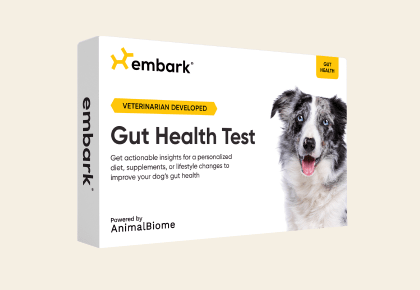Labradoodle
Fun Fact
The first successful cross between a Lab and a Poodle was a dog named Sultan. This dog was considered a blend of the breeds' best qualities: smart and gentle, with the highly sought after hypoallergenic coat.
-
Labradoodles at a glance
Labradoodles, as the name suggests, are a cross between two dog breeds — Labrador Retrievers and Poodles. Labradors are considered friendly, energetic, and even-tempered, and Poodles are athletic, smart, and famous for having hypoallergenic coats. Many Labradoodle owners hope that their pup will take on these same traits. Since both parent breeds are generally athletic, Labradoodles tend to have higher energy levels and an eagerness to play. They make friends easily — with humans and other animals alike — promising to be a great addition to any family. The scientific name for Labradoodles, like all domesticated dogs, is Canis lupus familiaris. -
About the Labradoodle
The Labradoodle hybrid was first created by Wally Conron, head breeder of the Australian Guide Dog Association, in 1989. His goal was to keep the temperament and skills of the Labrador Retriever while adding a hypoallergenic coat to the gene pool (enter the Poodle). News of the Labradoodles' success as a guide dog spread quickly. Soon, people from all around the world were requesting this breed mix. Breeders quickly stepped up to the plate in an attempt to provide dog lovers with this popular new crossbreed. -
Physical characteristics
The Labradoodle can range in size from petite (8-15 pounds) to miniature (15-25 pounds), medium (25-45 pounds), and standard (45-75 pounds). The average height of a Labradoodle is 21-24 inches. When dealing with designer or mixed breed dogs, it can be difficult to know which size a puppy will grow to be. As a rule, Labradoodle mixed with Toy Poodles will be smaller and lighter than those mixed with Standard Poodles. An Embark Dog DNA test can help predict a dog’s adult size. -
Nutrition
Consulting a vet for a dietary plan is recommended. In general, feeding a Labradoodle should involve a high-quality dry kibble diet. Look at the back of the bag and weigh the dog every couple of weeks to figure out if they are gaining too much or too little weight with your feeding plan. In the United States, look for the AAFCO label stating it is approved and tested for growth in puppies. Speak with your veterinarian regarding whether or not your dog should eat large breed puppy food or a special protein/carbohydrate type. Also discuss your dog’s risk of hypoglycemia (low blood sugar), bloat, and other food-related illness with your veterinarian. -
Grooming and shedding
Labradoodles' coat texture can vary depending on the inherited genes from the parents. For instance, if the puppy inherits the coat of the Labrador parent, they will have a thick double coat that is known for its shedding. If they inherit the coat of the Poodle parent, they will have a short, single coat that tends to be finely textured and requires regular grooming. Be sure your dog is fully vaccinated before visiting the groomer. When bathing your Labradoodle, use a gentle shampoo (oatmeal, aloe, or fatty acid-based shampoos) that's specifically made for dogs. Be sure to clean your dog’s ears with a self-drying cleaner, made for dogs, after baths or swimming, and for normal ear cleanings. -
Playtime and training
When it comes to keeping a Labradoodle healthy, regular exercise, socialization, and obedience training are mandatory. Labradoodles possess high energy and exuberance, yet can often be gentle and friendly enough to play well with children. Because they have so much energy, it is important to give them room to run. If you live in a small space such as an apartment, give this dog frequent walks. Labradoodles are incredibly intelligent and will likely pick up basic commands easily. That said, they can also quickly become bored — which may result in destructive behavior. They require mentally stimulating activities such as agility lessons, hide-and-seek, or obedience training for competitions. As a rule, Labradoodles should attend puppy classes after they have had their initial vaccination series (including rabies) and are older than 12 weeks. Earlier, supervised socialization or playtime with dogs your pet is familiar with will be extremely helpful. -
Health and aging in Labradoodles
This breed typically lives between 12-14 years. To ensure the best quality of life for a Labradoodle, learn about the genetic health risks most likely to impact the breed. An Embark Dog DNA Test looks at the following health conditions in Labradoodles:
Did you know?
75% of dogs are either at risk for or a carrier of a genetic disease. Embark Dog DNA Tests screen for 270+ genetic health risks so you can give your dog the proactive care they deserve. Early detection of genetic health risks will help Labradoodle owners detect issues early and develop a proactive care plan with their vet. Genetic testing can help dog lovers give their dogs the best care and quality of life for many years to come. -
Health Conditions
Learn about your dog's genetic breed ancestry with Embark
Dog owners
Breed identification, health and trait insights, personalized care recommendations, and the world’s first canine relative finder—all in one leading dog DNA test.
Learn about the report for dog ownersShop the test
Breeding programs
Embark’s test for breeding programs is one comprehensive DNA test designed with your needs in mind.
Learn about the report for breedersShop the test






